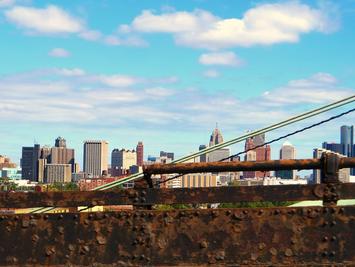
Happy New Year, everybody.
My latest column in Governing magazine is about another possible piece of fallout from the coronavirus, namely the undermining of the regional unity and solidarity that metropolitan areas have worked hard to build in recent years. Here’s an excerpt:
This shift toward remote work will reduce the level of city-suburb cohesion that comes from workers commuting from one place to the other. Suburban residents who are employed downtown have a real, physical connection to the city by virtue of spending 40 hours a week working there. They are in the city, engaging in the city. The same is true in the opposite direction for reverse commuters spending work time in suburbs. Less commuting to the office means less city-suburb engagement via the workplace.
COVID-19 has also greatly diminished the number of people coming into the city for dining and entertainment. In some cases, suburban public health limitations have been less restrictive than urban ones. This encouraged suburbanites who did go out to stay closer to home. Many suburbs have significantly elevated their game in terms of improving amenities over the last decade. COVID-19 is giving suburban residents the opportunity to discover that some of their own communities are now competitive and de facto self-sufficient for many amenities. The major regional entertainment institutions that are still city-based, such as most performing arts organizations, face potentially painful downsizing. Some may cease operations entirely.
Out of sight, out of mind, as the saying goes. Anything that reduces the number of visits suburbanites make into the city (and vice versa) reduces the sense of solidarity and shared fate that ideally characterizes these places.
Click through to read the whole thing.
Subscribe to Heartland Intelligence
Aaron M. Renn is an opinion-leading urban analyst, consultant, speaker and writer on a mission to help America’s cities and people thrive and find real success in the 21st century. He focuses on urban, economic development and infrastructure policy in the greater American Midwest. He also regularly contributes to and is cited by national and global media outlets, and his work has appeared in many publications, including the The Guardian, The New York Times and The Washington Post.
Photo credit: Ken Lund via Flickr under CC 2.0 License.












